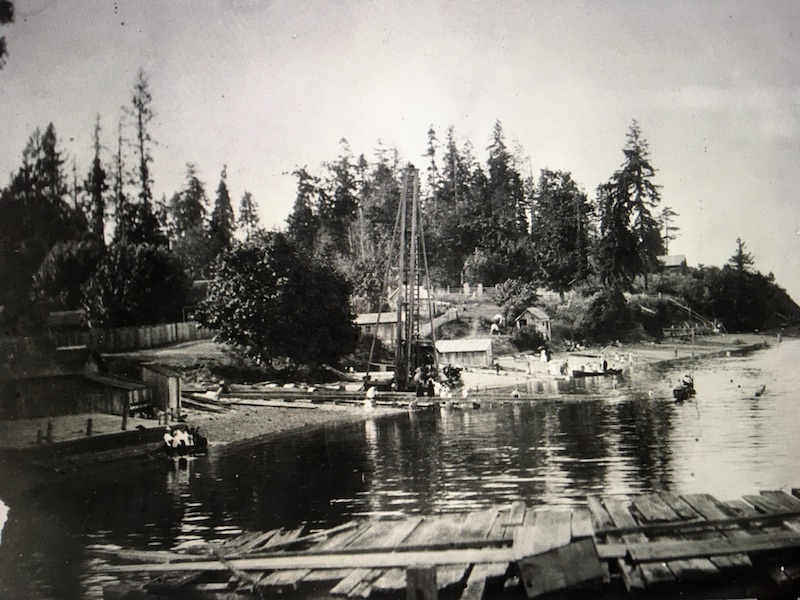Khanahmoot – History of New Brighton Park
Submitted by Caroline Penn
Imagine a shoreline teaming with crabs and shellfish beds, its banks graced with cedar, hemlock, and small creeks, tucked in close to our modern-day 2nd Narrows Bridge. For the Squamish, Musqueam and Tseil’waututh people this was “Khanahmoot”. According to Squamish origin stories a Man and Woman appeared from out of the creek waters at Khanahmoot and their descendants lived there for thousands of years until the arrival of European settlers.
Today we call this site New Brighton Park. Nestled between the Bridge on the east and the Port of Vancouver on the west this Park is now a multi-use area with many public amenities – fields, playgrounds, picnic sites, a beach and a pool, and paths for walking and biking.
The Park is now accessed from McGill Street but in the 1850’s there was a trail system that led from New Westminster via the berry bushes of Burnaby Lake all the way to Burrard Inlet. This trail was called “North Road” and was an alternate supply line. In 1865 it was renamed Douglas Rd. and in the same year the New Brighton Hotel was built, along with a wharf and rowboat service. A ferry and stagecoach service soon followed, connecting the area to New Westminster and shores of Burrard Inlet. In 1869 the Brighton Hotel was sold to “Maxie” Michaud and was named the Hastings Hotel, after admiral Hastings, and by 1876 a road was established to connect the Hastings Town site to the Granville and Gastown areas.
The 1880’s were the boom years when the Hastings Town site became known as the most fashionable “watering place” in BC for bathing and boating. Here was a dance hall and skating rink and sporting events on nearby fields. Land was bought up and divided into north and south sections. The 1906 Survey saw streets named after universities (Cambridge, Oxford and McGill) and mining areas (Kootenay, Renfrew, and Kaslo)

In 1911 the Hastings Town site became part of Vancouver and was transformed into a park. The land was also filled to create Industrial land. At one time it was a Japanese Internment site.
A Shoreline Habitat Restoration Project was developed in April 2016 as a joint venture with Vancouver Park Board and the Port of Vancouver. Work began in July 2017 and was completed on this 25-acre Park in 2018. Landfill was removed and a tidal estuary/wetland was reconstructed, along with viewing platforms and a central island. Native trees and coastal shrubs were planted around the site.
Further restoration work is now being done to remove invasive plants from the park, and Nature Vancouver members are now at work on this project. See a report and photos at https://naturevancouver.ca/new-brighton-park-restoration-initiative/
More References:
https://vancouvertraces.weebly.com/new-brighton.html
https://twnsacredtrust.ca/wp-content/uploads/2015/05/Morin-Expert-Report-PUBLIC-VERSION-sm.pdf